
France is a wonderful country, full of life and unique places. But the majority of tourists head to Paris to explore famous museums and climb to the top of the Eiffel Tower. Afterward, they head home, thinking they have seen everything there is to see in France.
However, that couldn’t be further from the truth. There are so many other incredible places you can visit in this country.
Instead of the Eiffel Tower and the Louvre, let your next visit to France be dedicated to the picturesque villages and prettiest medieval towns. You will be amazed by the medieval castles and the surrounding countryside featuring breathtaking natural scenery.
There are numerous enchanting villages, but only around 150 are considered the most beautiful ones. France has established an independent association, “Les Plus Beaux Villages de France,” that promotes the cultural heritage of French villages.
Strict conditions must be met for villages to be considered the most beautiful ones, including having less than 2,000 inhabitants, as well as national heritage sites.
We have picked 17 of the most beautiful fairy-tale villages of France that are worth visiting. Enjoy this beautiful journey.
1. Explore Villefranche-sur-Mer (Provence-Alpes-Côte d’Azur) and Its Colorful Houses
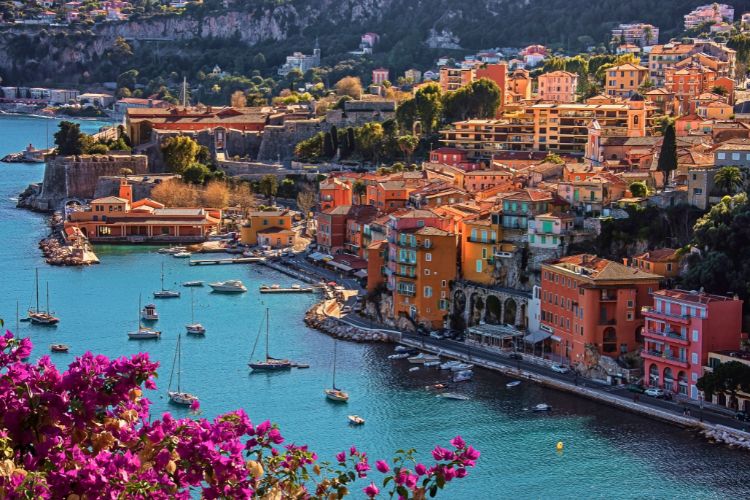
Villefranche-sur-Mer is a true Mediterranean pearl, located in the extreme southeast of France. This village is situated on the French Riviera, between Nice and Monaco.
Villefranche-sur-Mer with many colorful houses along the coast is known for the deep sea where you can often see large ships. In addition, you can also find great places for diving and sailing.
There are also two important cultural monuments in the village: St. Peter’s chapel from the 16th century and St. Michael’s church from the 18th century.
2. Pigna (Haute-Corse) Is Named After a Tower
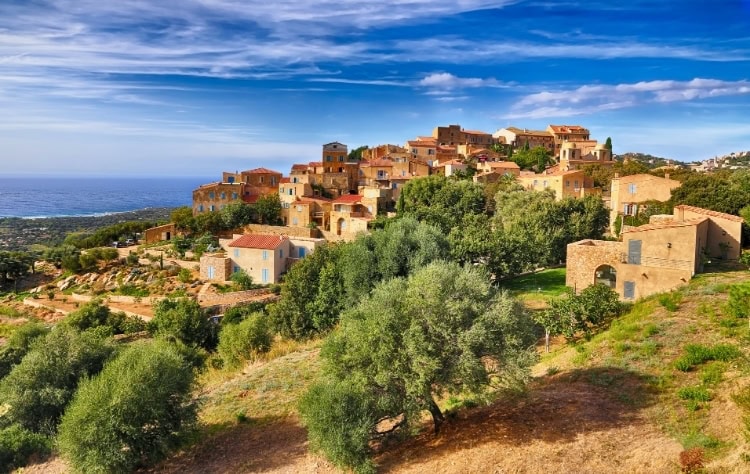
The village of Pigna is located in the region of Balagne, in the north of Corsica. It was named after the tower of the same name, built in that place in the 9th century. Today, only about 100 people live in the village, and it is best known in the world of music.
The community of musicians that gathers in the village organizes a music festival, Estivoce, every July. In the village of Pigna, there is an open-air auditorium where concerts are held.
3. Visit Eguisheim (Haut-Rhin) and Have Some Wine
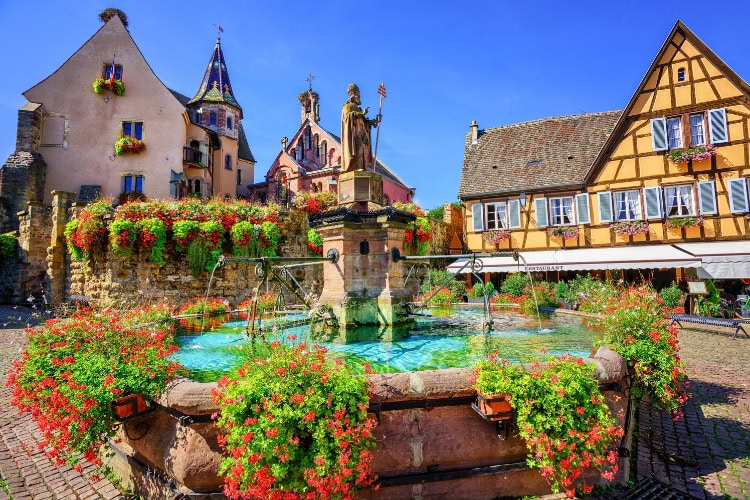
Eguisheim is a medieval village located in the Haut-Rhin department, in the northeast of France, near Germany. It has less than 2,000 inhabitants but is known for its vineyards and top-quality wines.
The village of Eguisheim is part of the Alsatian wine route, so it is one of the main reasons why tourists visit it. The village is dominated by St.-Leon castle, narrow streets, and charming houses with flower terraces.
Because of the numerous trails, cyclists and hikers also love visiting, and every August it hosts an interesting stork festival.
Read More: Exploring the Top Wine Regions of France
4. See Locronan (Brittany) and Its Stone Houses

Locronan is located in the west of France, just a few kilometers from the sea. It has about 800 inhabitants, but also a long tradition and history. The center of the village is dominated by St. Ronan church from the 15th century and many stone houses.
You can leave your car in the parking lot at the entrance to the village. During the stroll, you can see many small shops, workshops, and antique shops.
That also means you can buy interesting souvenirs from local artisans. Due to its unique ambiance, the village of Locronan is a frequent scenography of films and series that are set in earlier epochs.
Discover Brittany: Guided Tours & Must-See Attractions
5. Veules-les-Roses (Normandy) is Known for Lush Greenery

Veules-les-Roses has only 500-600 inhabitants. This charming village is located in the north of France, on the coast of Normandy. It is known for its lush greenery and houses with thatched roofs. The smallest French river, Veules, flows through the village.
The village of Veules-les-Roses is also known for its art galleries, the church of St. Martin from the 13th century and the monument to the famous French writer Victor Hugo.
Read More: Timeless Honfleur: Where Normandy’s Art, History and Apple Cider Create the Perfect French Escape
6. Saint-Veran (Hautes-Alpes) – One of the Highest Villages in Europe

Saint-Veran is one of the three highest villages in Europe.! It is located in the French Alps, over 2,000 meters (6,561 feet) above sea level. It has only 200 inhabitants. The incredible beauty of Queyras National Park is the main reason tourists adore visiting this small village.
In winter, you can ski in Saint-Veran, while popular hiking trails are available in the summer. The traditional old house and the Soum museum are the main attractions in the village.
7. Enjoy Riquewihr (Alsace) and the Village’s Mixed History
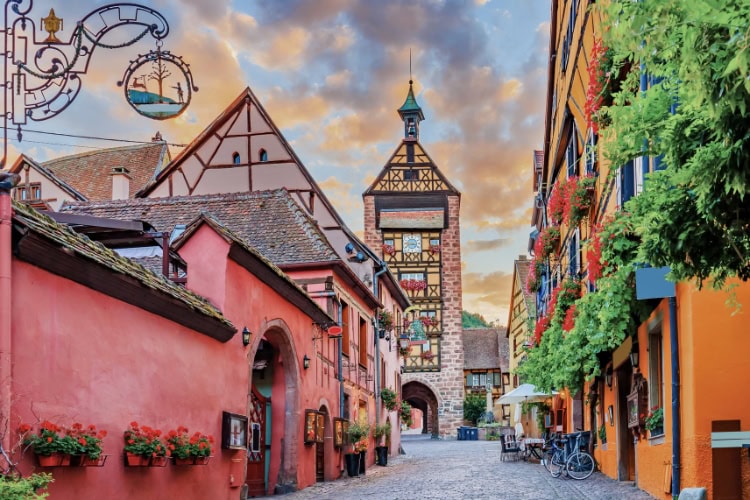
Riquewihr is one of the most beautiful villages in Alsace. It is located in a valley, only 15 km (9.3 miles) from the town of Colmar, and has only 1,000 inhabitants.
The village of Riquewihr features mixed German-French history, language and culture. It is recognizable by the ramparts of the medieval fortress, colorful houses, and the Dolder Tower, which now houses the Museum of Art and Popular Tradition.
In the cobblestone street Charles de Gaulle, you will find numerous souvenir shops, stores, and restaurants. Also, if you want to take a break, you can try top local wines and excellent dishes.
8. Explore Gordes (Vaucluse) and a 16th-Century Castle

Gordes is a village with 1,600 inhabitants, situated in the southeast of France in the department of Vaucluse. In the center of this hilltop village is a 16th-century castle. It was built in the Renaissance style and served to defend the village, while today it houses the town hall and a museum.
All buildings in this village are required to be built of stone walls, and electrical cables must be hidden. Near the village of Gordes is Abbey Senanque, surrounded by beautiful lavender fields. From the slopes of this village, you will have a fantastic view of the Luberon countryside.
9. Domme (Dordogne) Features a Beautiful Panoramic View

Bastide is a medieval fortress, whose function was to defend the area from possible invaders. That is how the village of Domme was created. It was founded in the 13th century on a hill with a panoramic view of the Dordogne River valley, in southwestern France.
Today this village has about 1,000 inhabitants. The main attraction is the view. And not just any kind, but a unique landscape that will leave you breathless. Stroll through the village to the lookout from which you can enjoy the panoramic view of the entire Dordogne Valley.
Another interesting fact is that below Domme there is a cave 400 meters (1,312 feet) long that features beautiful cave decorations.
Read More: Fairytale Getaways: 12 Best Romantic Small Towns in Europe
10. Visit Gerberoy (Oise) and Enjoy the Scent of the Roses
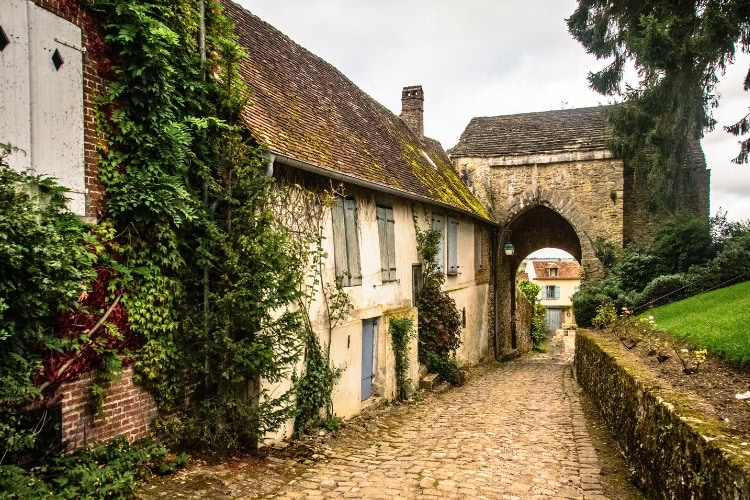
Gerberoy is a small village in the north of France, with fewer than 100 inhabitants. Houses and yards are decorated with dazzling flower arrangements.
The trend of growing roses was popularized by the painter Henry Le Sidaner, who bought a property in this village at the beginning of the 20th century and created a beautiful rose garden on the ramparts of the old fortress.
Every June the village of Gerberoy hosts the Rose Festival. During the festival, the village exudes a special, romantic atmosphere. Stroll through its cobbled streets and let the scent and the beauty of roses charm you.
11. Rochefort-en-Terre (Brittany) Has Flowers Everywhere

Rochefort-en-Terre is located in the Brittany region in the west of France and has only 600 inhabitants. Impressive flower arrangements are the main reason people visit it. You can see flowers everywhere – on terraces, in gardens, in squares.
Aside from flowers, you can also see a castle from the 12th century, which was destroyed during the 18th century. However, the American-French painter Alfred Klots restored the castle at the beginning of the 20th century.
Today it houses a gallery with Klots works, as well as a collection of various objects found around the village. You can go on a day trip to a nearby lake that features a lovely beach and many sports facilities.
Read More: Traveling Down the Backroads of Brittany
12. Collonges la Rouge (Nouvelle-Aquitaine) Features Fortified Walls from the 14th Century

Collonges-la-Rouge is a village with 500 inhabitants, located in the central part of France, in the department of Corrèze. The entire village is built with red sandstone, so all buildings are in the same shade.
During the Middle Ages, this village was a stronghold, so even today you can see fortified walls from the 14th century, several churches, towers, and castles from that period.
Charming houses from the 15th and 16th centuries are very interesting and the house of Maison de la Sirene will delight you with its architectural beauty. Narrow cobbled streets are filled with restaurants, workshops and small shops where you can buy interesting souvenirs and local wines.
Guided Tour of Collonges la Rouge
13. See Roussillon (Vaucluse) and Its Red Cliffs

The surroundings of the village of Roussillon, located in the southeast of France, are rich in ochre pigment. In the past, thousands of people worked on excavating this pigment, which is used in the textile industry. Today, that activity is prohibited in order to preserve the landscape with recognizable red cliffs.
About 1,300 people live in the village today, and they are mainly engaged in fruit growing and wine production. During a walk through the streets of this village, you can see the facades painted with a characteristic reddish color.
It is interesting that during World War II the famous writer Samuel Beckett stayed in the village of Roussillon, hiding from the Nazis.
Discover Roussillon: Guided Tours & Must-See Attractions
14. Explore Moustiers Sainte-Marie (Alpes-de-Haute) – The Entrance to Verdon Gorge

Moustiers Sainte-Marie is located in the southeast of France, at the entrance to Verdon Gorge. Impressive stone cliffs above the village will delight you. The village with only 700 inhabitants is known for pottery and a museum of ceramics.
The main attraction is a golden star, placed on a chain between two high rocks. It has been a trademark of this village for centuries. Notre-Dame-de-Beauvoir Church is located on the cliffs, which can be reached by stone steps. From there you can enjoy the view of the wonderful Maire Valley.
15. Visit Najac (Midi-Pyrenees) and the Fortress on the Top of the Hill
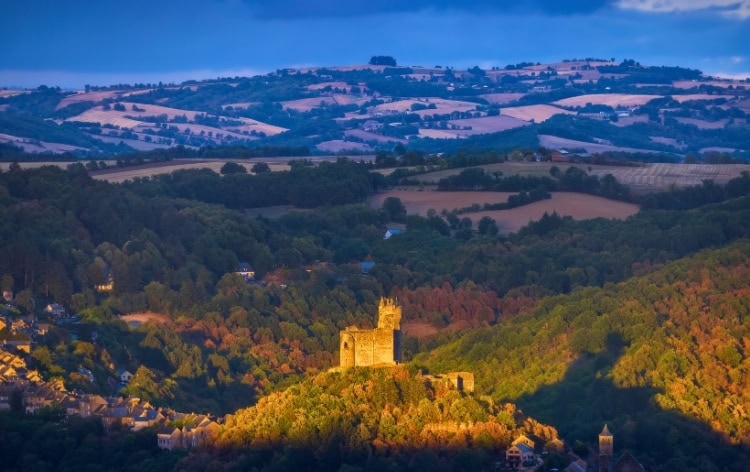
Najac is located in the south of France and has only 700 inhabitants. It was founded in the Middle Ages, when the Chateau de Najac fortress was built on top of the hill, above the river Aveyron.
As you walk through the narrow streets, you can see medieval houses, a 14th-century fountain, and a medieval Gothic church. From the terraces of the local cafes, you will have an extraordinary view of the surroundings enclosed by the forest.
There is also the 13th-century Saint Blaise Bridge, which connects the two banks of the Aveyron River.
16. Vezelay (Burgundy) – Place of Pilgrimage

Vezelay is located in central France, halfway between Paris and Lyon. Today, only 400 inhabitants live in it, but it is a place of great importance for Christians. The relics of St. Mary Magdalene are kept in the village, so Vezelay has been a place of pilgrimage for centuries.
The 11th-century Romanesque Basilica of St. Magdalene and its surroundings have been declared a UNESCO World Heritage Site. Every August, a festival of sacred music is held in the village.
In the local Zervos Museum, you can see works by Picasso and other artists, as well as various sculptures and archeological objects. Keep in mind that Burgundy is a famous wine region, so you can also get top-quality wines here.
17. Lautrec (Tarn) Is Known for Pink Garlic
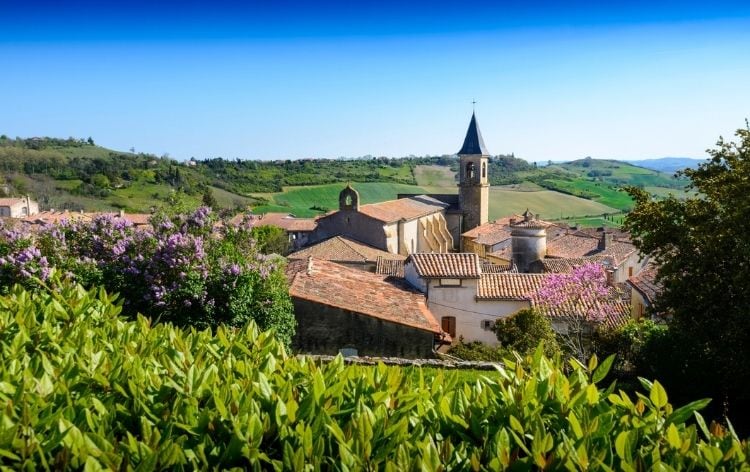
Lautrec is located in the south of France and, with 1,800 inhabitants, it’s one of the larger villages. This area is known for the production of pink garlic.
In the village, you can see a windmill from the 17th century, which is still in use. From the hill on which it is located, you will have a great view of the magnificent surroundings.
The church of St.Remy, the ramparts of the Porte de la Caussade and the medieval market square testify to the medieval history of this village. Stop by one of the many small restaurants and try truffles, local cheese and wines.
Inspire your next adventure with our articles below:
- Discover the Dreamy Town of Annecy in the French Alps
- The Ultimate European Bucket List: 23 Life-Changing Experiences
Author Bio: Based in Serbia in Europe, Marija Stojanovic Petkovski worked as a journalist but realized writing about the most beautiful places in the world is something that inspires her. She is sure that a pint of good craft beer perfectly accompanies a tasty homemade lasagne. In her spare time, she enjoys playing with her children and spending time outdoors with her family.
Want to discover more hidden gems and helpful travel tips? Join our free newsletter for the latest travel secrets and travel articles.
We are reader-supported and may earn a commission on purchases made through links in this article.
